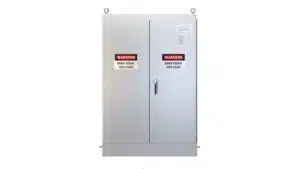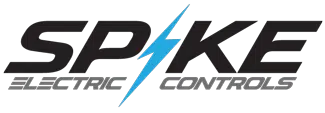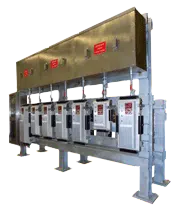 Electrical safety should always be paramount when working on any electrical project and installing a bussed cable tap box is no exception. Ensuring correct and safe installation will not only protect the equipment but, most importantly, it will protect individuals from potential electrical hazards. This blog post will explore safety measures and best practices during the installation of a bussed cable tap box.
Electrical safety should always be paramount when working on any electrical project and installing a bussed cable tap box is no exception. Ensuring correct and safe installation will not only protect the equipment but, most importantly, it will protect individuals from potential electrical hazards. This blog post will explore safety measures and best practices during the installation of a bussed cable tap box.
Understanding Bussed Cable Tap Boxes
Bussed cable tap boxes play a crucial role in power distribution systems, managing and distributing electricity from a power source to various circuits or devices. Our bussed cable tap boxes come with a 600V to 1000V DC voltage range and are rated from 600 Amps to 6000 Amps. These specifications make our products versatile and capable of fitting into various power distribution networks.
Safety Measures When Installing a Bussed Cable Tap Box
When installing a bussed cable tap box, following safety measures is crucial. Here are some guidelines:
- Disconnect power: Before starting the installation process, ensure that the power source is disconnected to avoid any electrical hazards.
- Use Protective Gear: Always wear appropriate protective gear like insulated gloves, safety glasses, and protective footwear during the installation.
- Follow Manufacturer’s Instructions: Always adhere to the manufacturer’s guidelines and recommendations to ensure correct and safe installation.
- Proper Cable Management: Ensure all cables are properly routed and securely attached to the box. Avoid overcrowding of cables to prevent overheating issues.
- Check for Proper Grounding: The cable tap box must be properly grounded to ensure safety and prevent electrical shocks.
Understanding and Maintaining NEMA Ratings
When choosing the right enclosure for your cable tap box, NEMA ratings are crucial. These ratings specify the level of protection the enclosure provides against external factors such as dust, water, and corrosion. Our enclosures come in the following NEMA ratings:
- NEMA 1: For general-purpose indoor applications. Protects against dust, light, and direct contact with live parts.
- NEMA 4: For indoor and outdoor use. Offers protection against windblown dust, rain, hose-directed water, and external ice formation.
- NEMA 3R: Suitable for outdoor use. Guards against falling rain and ice formation, but not fully protected against dust.
- NEMA 12: For indoor use, provides protection against dust, falling dirt and non-corrosive liquid drips.
- NEMA 4X Stainless Steel (304 and 316SS): Provides superior protection against corrosion, windblown dust, rain, water, and ice formation. Suitable for both indoor and outdoor use.
Maintaining these NEMA ratings involves ensuring the enclosure’s seals and gaskets are intact, its doors close securely, and no damage compromises its protective qualities.
Best Practices for Installing a Bussed Cable Tap Box
Here are some best practices to follow:
- Proper Planning: Ensure the cable tap box is the correct size for your cables and has the appropriate rating for the environment in which it will be installed.
- Regular Inspections: Regularly inspect the box for any signs of damage or wear and tear that could compromise its safety or performance.
- Proper Installation: Install the box securely, ensuring it’s properly grounded and that all connections are secure.
- Maintenance: Regular maintenance is essential. Keep the box clean, regularly check the cables for wear and tear, and ensure the enclosure maintains its NEMA rating.
You can find more information about our bussed cable tap boxes here.
Conclusion
The safe installation of a bussed cable tap box involves following safety measures and adhering to best practices. Not only will this ensure the longevity and efficiency of the electrical system, but it will also safeguard against potential electrical hazards. Spike Electric Controls offers a range of NEMA-rated enclosures designed to meet your specific needs, ensuring optimal safety and performance.
Written by: Cole Attaway
Cole Attaway is the founder and CEO of Spike Electric Controls. Spike's mission is to improve the accessibility and delivery of industrial electrical gear for clients nationwide. Spike solutions result in reduced unplanned downtime, less overtime, and greater operational efficiencies.


